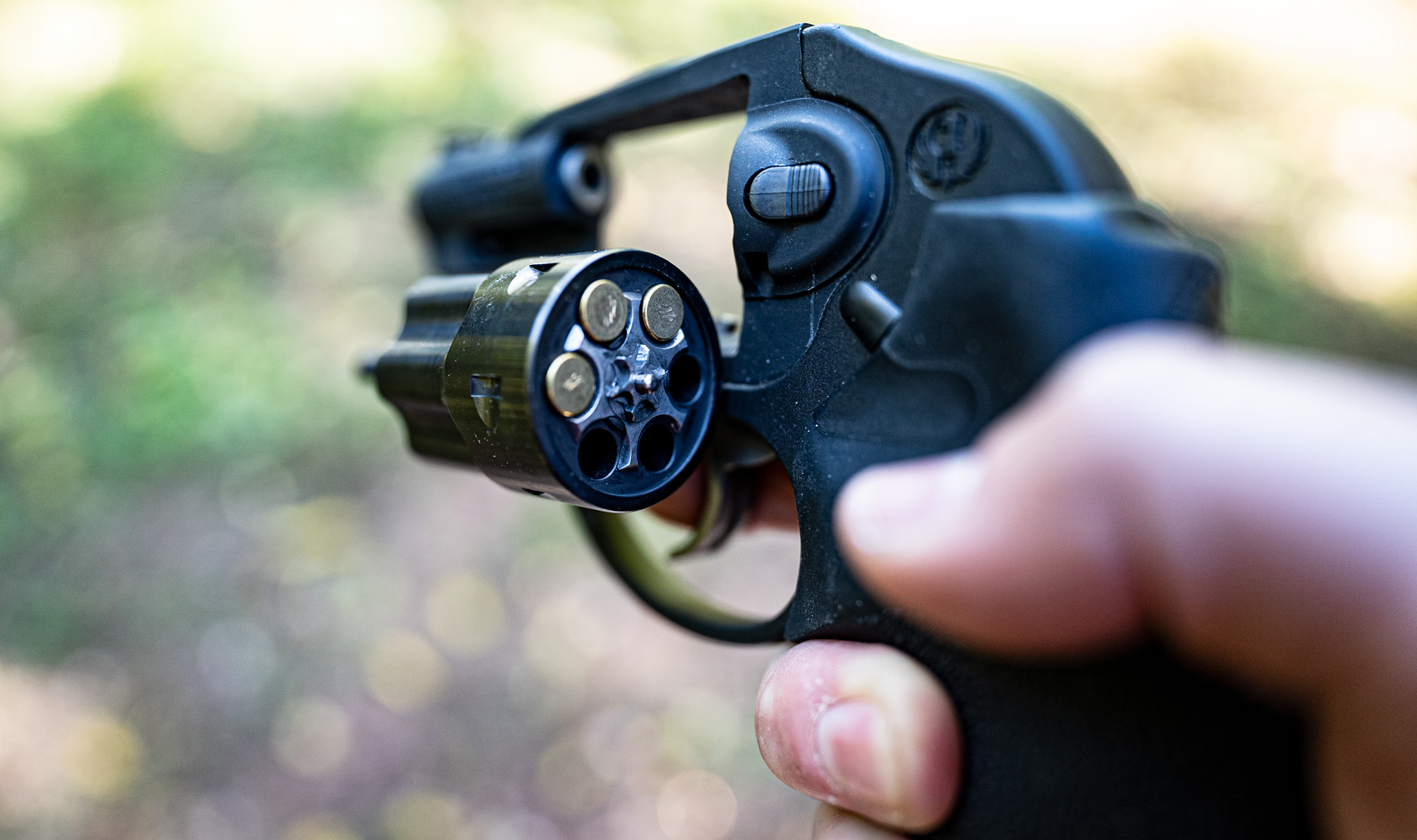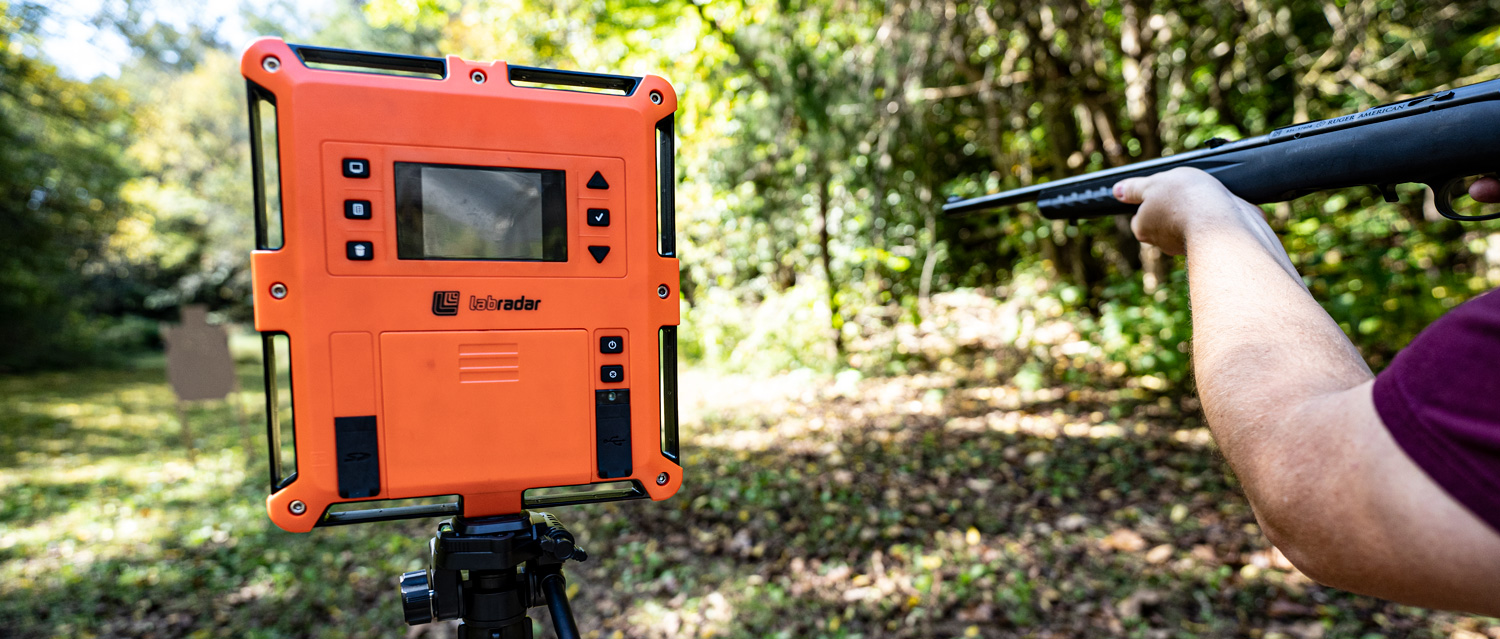A side by side look at the 17 HMR vs 22 WMR cartridges. Which of these rimfire rounds is a better fit for your shooting needs? We can help!
Two cartridges that look vastly different. And yet they can be incredibly similar in pricing, performance, and purpose. The .22 Winchester Magnum Rimfire (WMR) and the .17 Hornady Magnum Rimfire (HMR) are two wallet-friendly cartridges that can be used for small game hunting, varmint control, and high-volume target shooting, among many other uses. So which way should you favor in the 17 HMR vs 22 WMR debate?
To choose the right cartridge for your needs, it helps to understand the main differences and ballistic performance of these versatile cartridges.
.17 HMR vs. .22 WMR: The Upfront Differences
| .22 WMR | .17 HMR | |
|---|---|---|
| Released | 1952 | 2002 |
| Bullet Diameter | .224 inches | .172 inches |
| Rim Diameter | .294 inches | .286 inches |
| Case Length | 1.055 inches | 1.058 inches |
| Total Length | 1.35 inches | 1.349 inches |
| Bullet Weight | 30 to 50 grains | 17 to 20 grain (Most are 17) |
Price
One of the top motivations for purchasing a rimfire rifle chambers with .22 WMR or .17 HMR is pricing. These are affordable rounds that allow shooters to spend a full day at the range without dropping hundreds of dollars. In fact, less than $20 should buy a day’s worth or cartridges.
When this article was written, the lowest per-round cost of the 22 WMR ammo was $0.34, while the .17 HMR could be purchased for $0.32 per shot*. These prices were on similar products by the same manufacturer, so it’s a fairly consistent comparison. The point is simple: .17 HMR may be slightly more affordable, but the difference is minimal. Shooters won’t pick one or the other based on price.
Size, Shape, and Bullet Weight Differences

If you stand 22 WMR vs 17 HMR side-by-side, you’ll notice clear similarities and differences. They are both roughly the same length and have similar case diameters, which is no coincidence, as the .17 HMR was created by slimming down the neck of the .22 WMR.
The main difference is the bullet.
The bullet on .17 HMR ammo is much thinner and lighter. Most are only 17 grains, while most .22 Magnum rounds have 30-grain bullets and can go as large as 50 grains or more. So how do these size and shape differences play out at the range?
Let’s take a look at four pairs of comparable cartridges to find out how their performance matches up.
.17 HMR vs. .22 WMR: Cartridge Performance
Muzzle Velocity
| Ammunition | Muzzle Velocity | 100 Yard Velocity |
|---|---|---|
| 22 WMR - CCI 30 GR VNT Poly Tip | 2,200 fps | 1,571 fps |
| 17 HMR - CCI 17 GR VNT Poly Tip | 2,650 fps | 1,986 fps |
| 22 WMR - Hornady 30 GR V-MAX | 2,200 fps | 1,421 fps |
| 17 HMR - Hornady 17 GR V-MAX | 2,250 fps | 1,901 fps |
| 22 WMR - Winchester 30 GR Varmint HV | 2,250 fps | 1,490 fps |
| 17 HMR - Winchester 17 GR Varmint HV | 2,550 fps | 1,901 fps |
| 22 WMR - Federal 50 GR Varmint & Pred. | 1,530 fps | 1,197 fps |
| 17 HMR - Federal 17 GR Varmint & Predator | 2,530 fps | 1,804 fps |
Velocity makes a big difference in overall performance, and as you can see from the stats above, the .17 HMR is consistently the faster round. In all four comparisons, it had faster muzzle and 100-yard velocities. The only comparison that was close was the Hornady V-MAX rounds, which were only 50 fps apart in muzzle velocity. However, at 100 yards the .22 slowed to almost 1,400 fps, while the .17 maintained just over 1,900 fps.
As often happens, the heaviest bullet has the slowest speed. The heaviest bullet in our comparisons was a 50-grain .22 WMR round, which was also 700 fps slower than the next-slowest cartridge.
While there are close stats, it appears that the .17 HMR is going to be the consistent winner for velocity. The .22 WMR is certainly quick for a rimfire cartridge, but the .17 HMR, with a lighter round and (basically) just as much propellant, was designed for speed. It would appear the designers met their goal.
Velocity Winner: .17 HMR
Muzzle Energy
| Ammunition | Muzzle Energy | 100 Yard Energy |
|---|---|---|
| 22 WMR - CCI 30 GR VNT Poly Tip | 322 ft-lbs | 164 ft-lbs |
| 17 HMR - CCI 17 GR VNT Poly Tip | 265 ft-lbs | 149 ft-lbs |
| 22 WMR - Hornady 30 GR V-MAX | 322 ft-lbs | 134 ft-lbs |
| 17 HMR - Hornady 17 GR V-MAX | 245 ft-lbs | 136 ft-lbs |
| 22 WMR - Winchester 30 GR Varmint HV | 337 ft-lbs | 148 ft-lbs |
| 17 HMR - Winchester 17 GR Varmint HV | 245 ft-lbs | 136 ft-lbs |
| 22 WMR - Federal 50 GR Varmint & Pred. | 260 ft-lbs | 159 ft-lbs |
| 17 HMR - Federal 17 GR Varmint & Predator | 242 ft-lbs | 123 ft-lbs |
While speed matters, shooters need to be aware of muzzle energy as well, especially if you are hunting with either cartridge. Energy impacts how deep a bullet penetrates, as well as mushrooming and energy delivery. The .22 WMR may be slower, but according to most statistics, it’s also more powerful.
One might expect the heavy 50-grain .22 WMR from Federal to have the top energy, but this was actually held by the .22 WMR 30-grain Winchester Varmint HV, which had a muzzle energy of 337 ft-lbs. However, the polymer-tipped .22 WMR from CCI had the best 100-yard energy with 164 ft-lbs.
There is a lot that can be pulled from the numbers, but basically we see that the .22 WMR hits with more energy, making it more effective against larger varmints and game animals.
Energy Winner: .22 WMR
Trajectory
Gauging the trajectory of a bullet is more difficult, largely because manufacturers provide differing stats. But there are a few we can consult.
When zeroed to 100 yards, the .22 WMR from Hornady (30 grain) drops 16.5 inches at 200 yards. Their .17 HMR, under the same conditions, only drops 8.5 inches. Using the same situation (zeroed to 100 yards), the .22 WMR from Winchester drops 14.9 inches, while the .17 HRM again drops 8.5 inches.
This supports the general reputation of the .17 HMR; it’s known for being a light yet incredibly accurate rimfire cartridge. The only concern is wind drift, as the smaller bullet is known to easily blow significantly off target if there is a strong breeze.
Trajectory Winner: .17 HMR
Choosing the .22 WMR or the .17 HMR

With so much in common, making a choice can be tough. But if you think about your preferred uses, you can make the right decision. Either round will perform well when hunting small game and varmints, but if you expect to pursue larger predator animals like coyotes, the heavier, more-powerful .22 WMR may be preferred. However, if you expect to need the best accuracy possible, placing shots at 100 to 200 yards on small game, the .17 HMR is a fun, reliable, and effective cartridge.
Get Outstanding Prices on .22 WMR, .17 HMR, and All Rimfire
From the range to the woods, we have the ammunition you need for your shooting lifestyle. Visit our site and browse our large inventory of affordable cartridges from the world’s top manufacturers.


